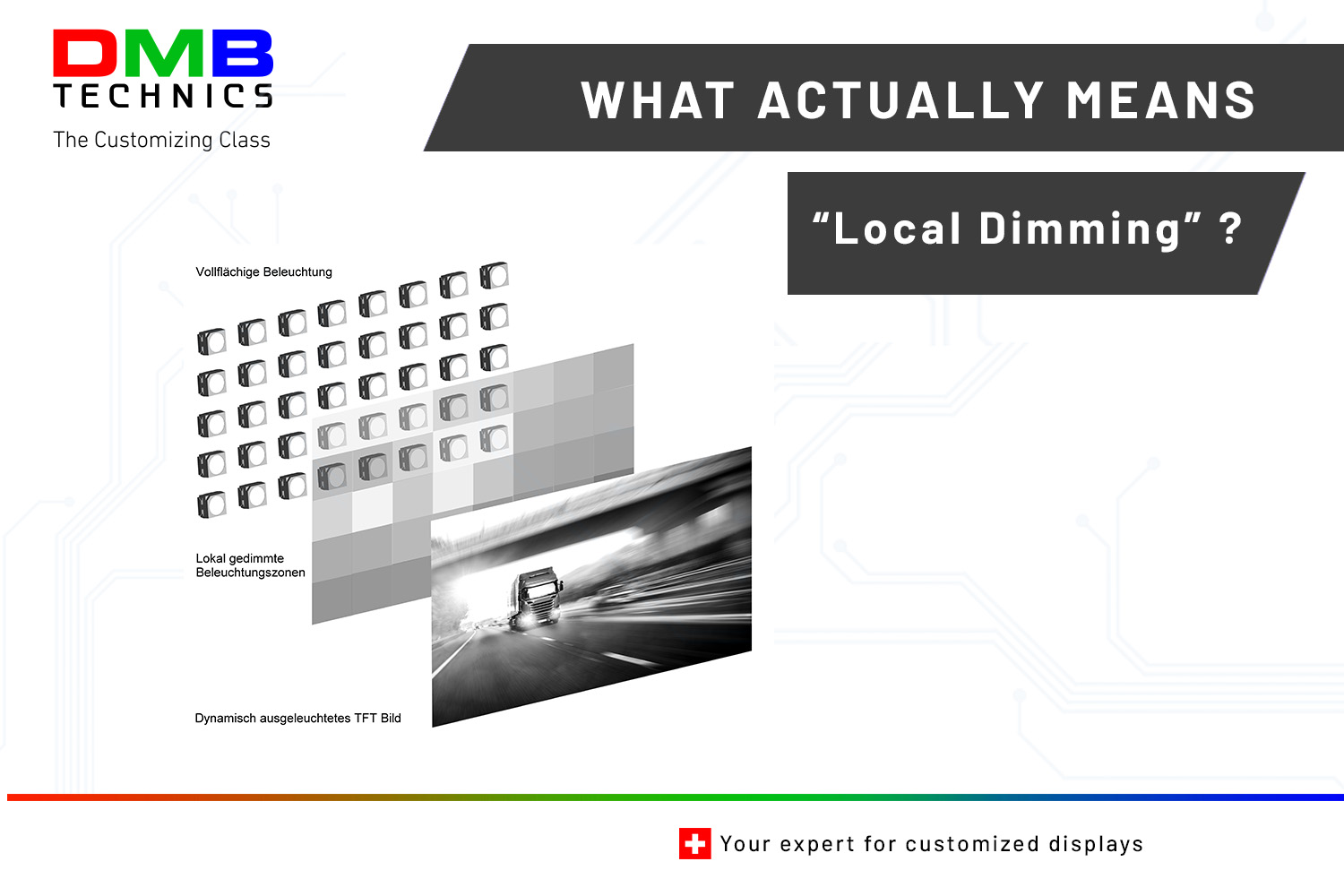Most industrial TFTs today have an edge LED backlight. The backlight illuminates the entire surface of the TFT, so if we reduce the brightness of the backlight, it affects the entire TFT surface at the same time.
The concept of “local dimming” requires a backlight with many LED sources whose brightness can be controlled individually and independently. For this purpose, the backlight contains a full-surface LED matrix, which is located directly behind the TFT.
Together with an image processing controller, each LED is individually controlled depending on the screen content. For example, the area of a display that shows some key figures should be as bright as possible, while the dark areas around it should be as black as possible.
This way, the contrast ratio is significantly increased. In the picture, you can see how the display content correlates with the brightness of the backlight.
Most industrial TFTs today have an edge LED backlight. The backlight illuminates the entire surface of the TFT, so if we reduce the brightness of the backlight, it affects the entire TFT surface at the same time.
The concept of “local dimming” requires a backlight with many LED sources whose brightness can be controlled individually and independently. For this purpose, the backlight contains a full-surface LED matrix, which is located directly behind the TFT.
Together with an image processing controller, each LED is individually controlled depending on the screen content. For example, the area of a display that shows some key figures should be as bright as possible, while the dark areas around it should be as black as possible.
This way, the contrast ratio is significantly increased. In the picture, you can see how the display content correlates with the brightness of the backlight.
Local Dimming in the world of displays


